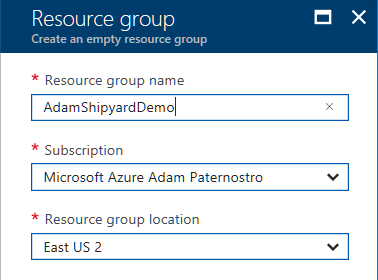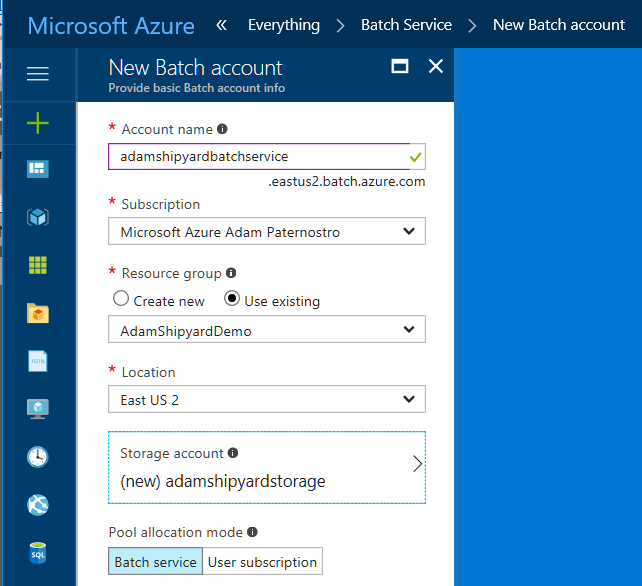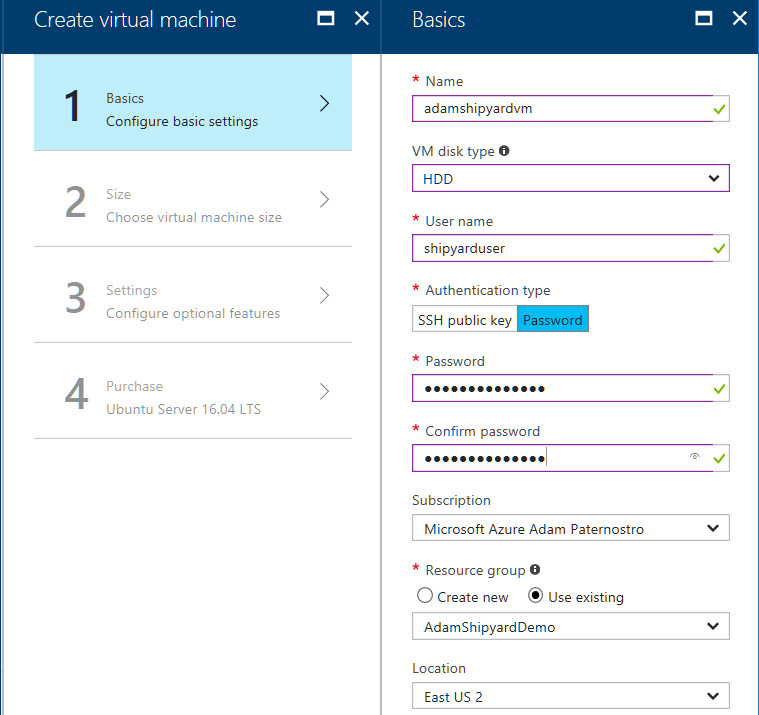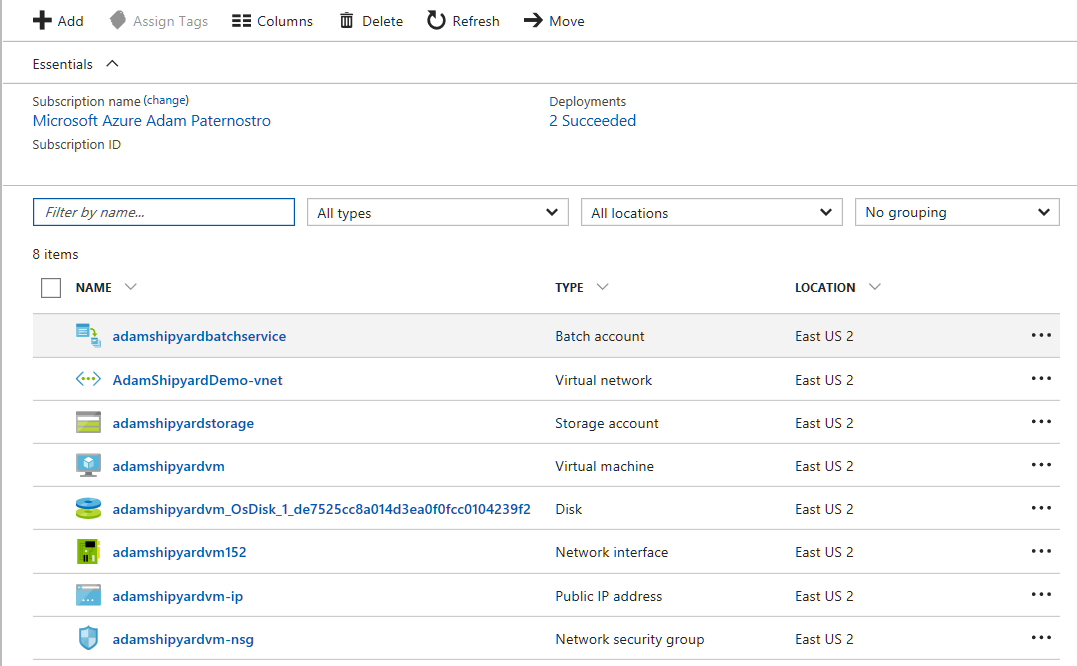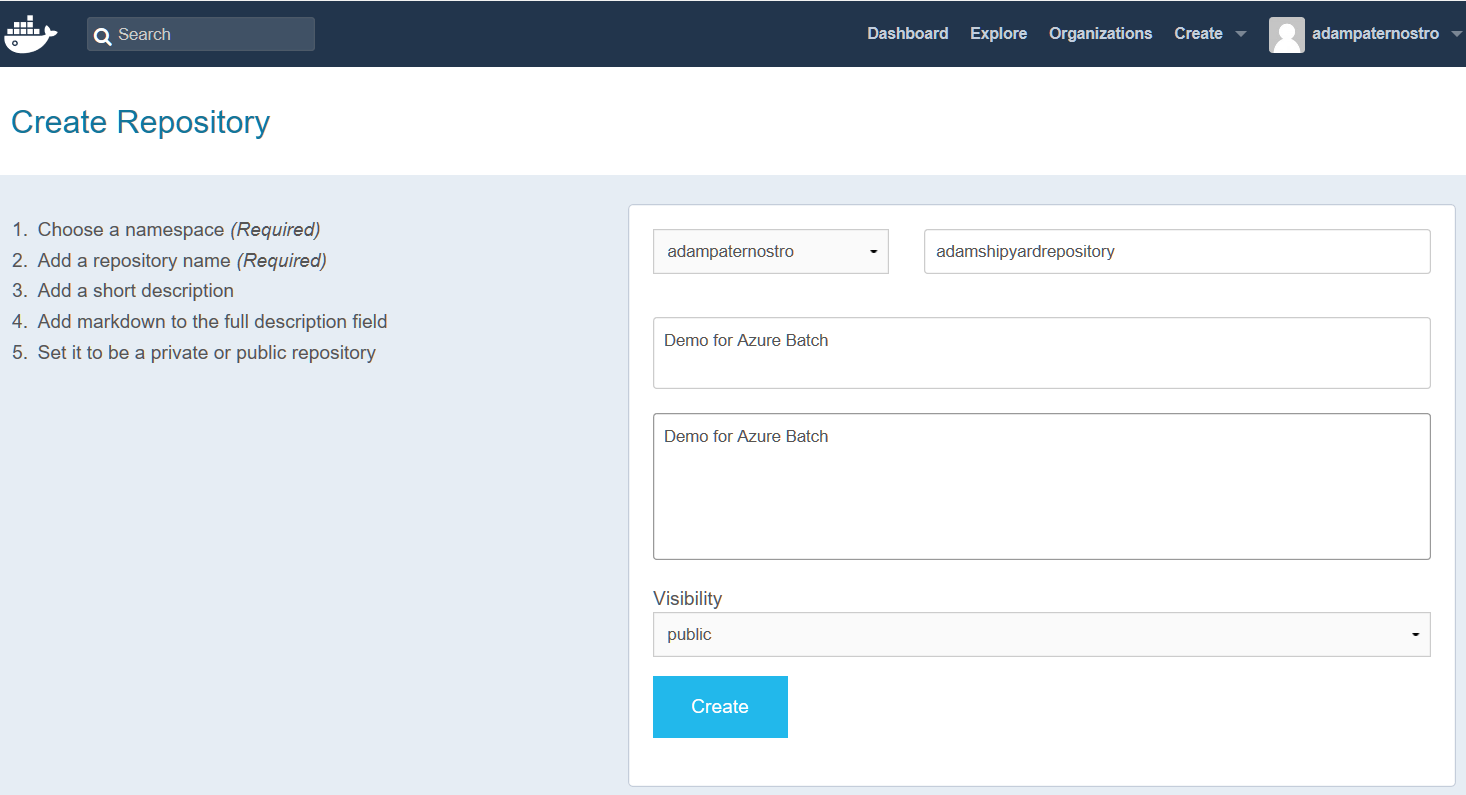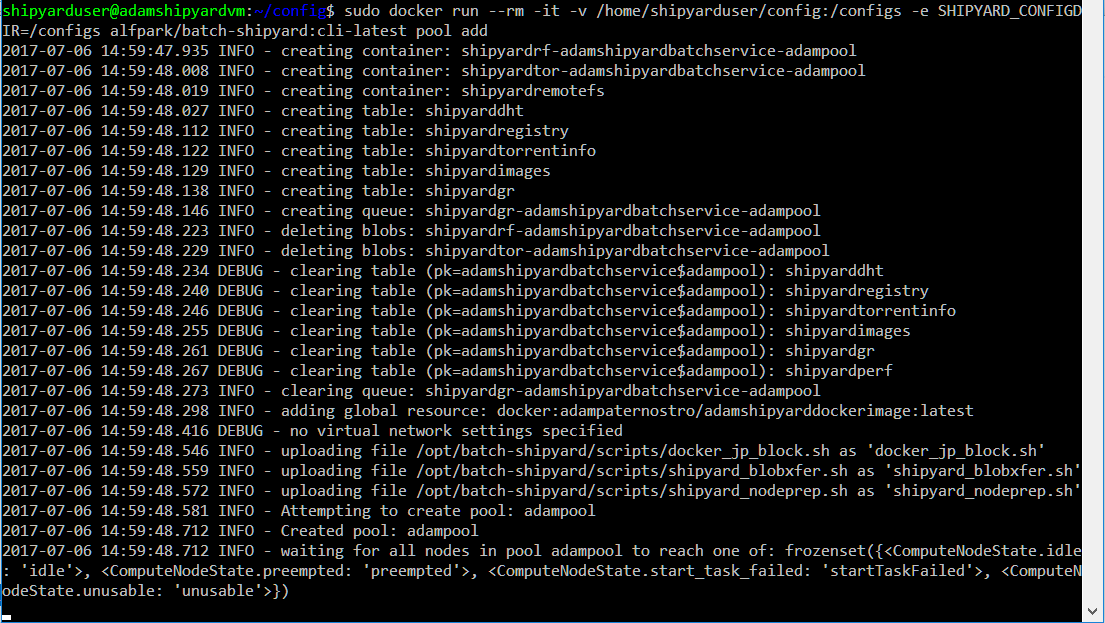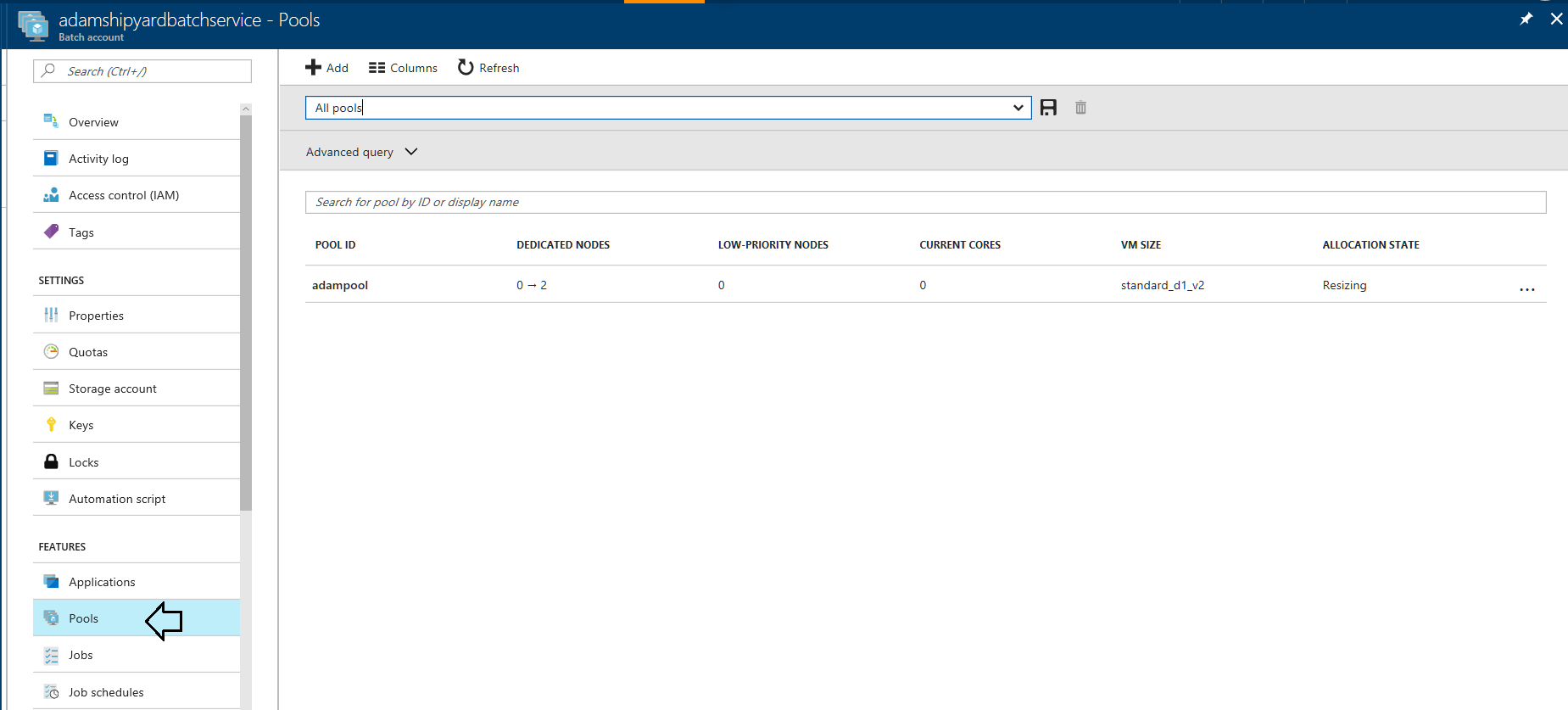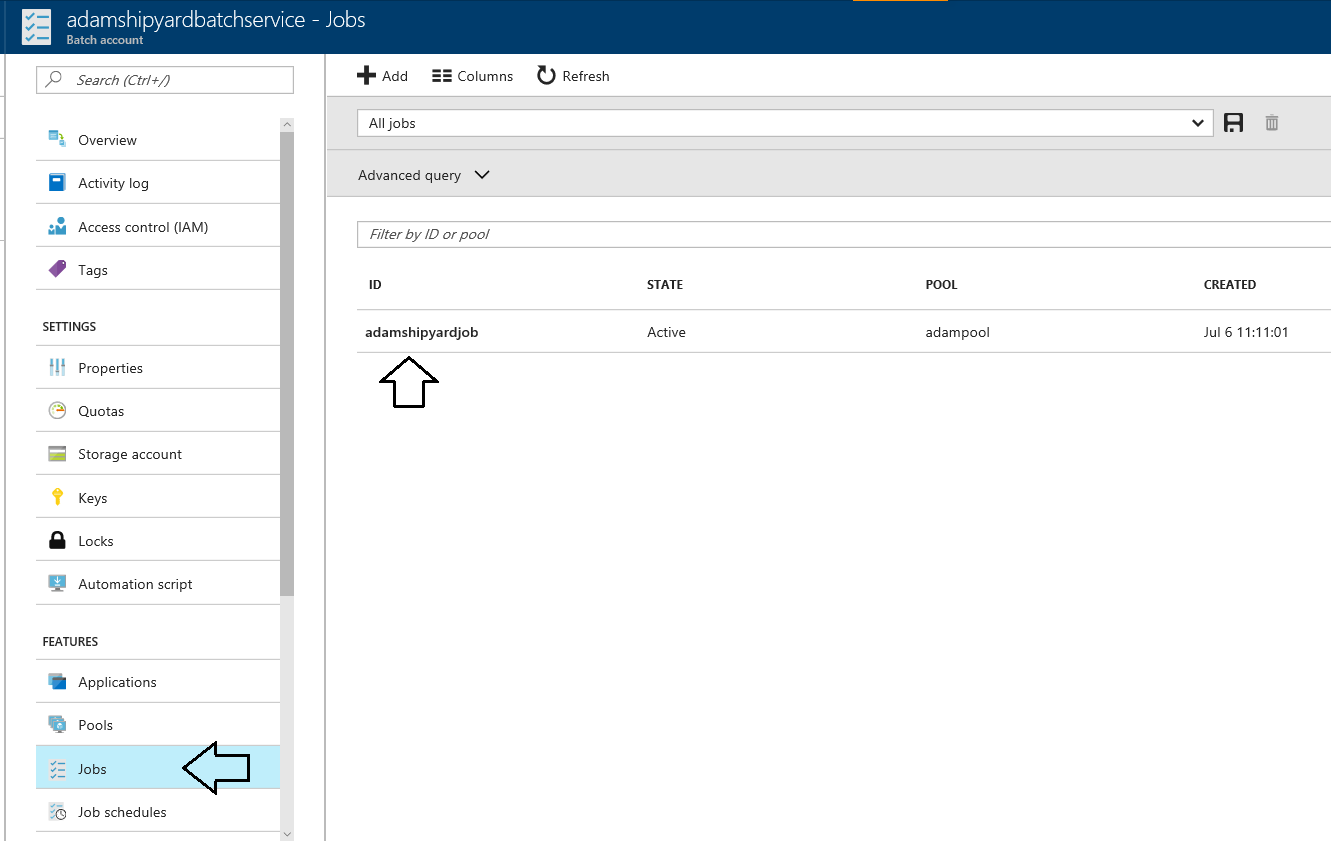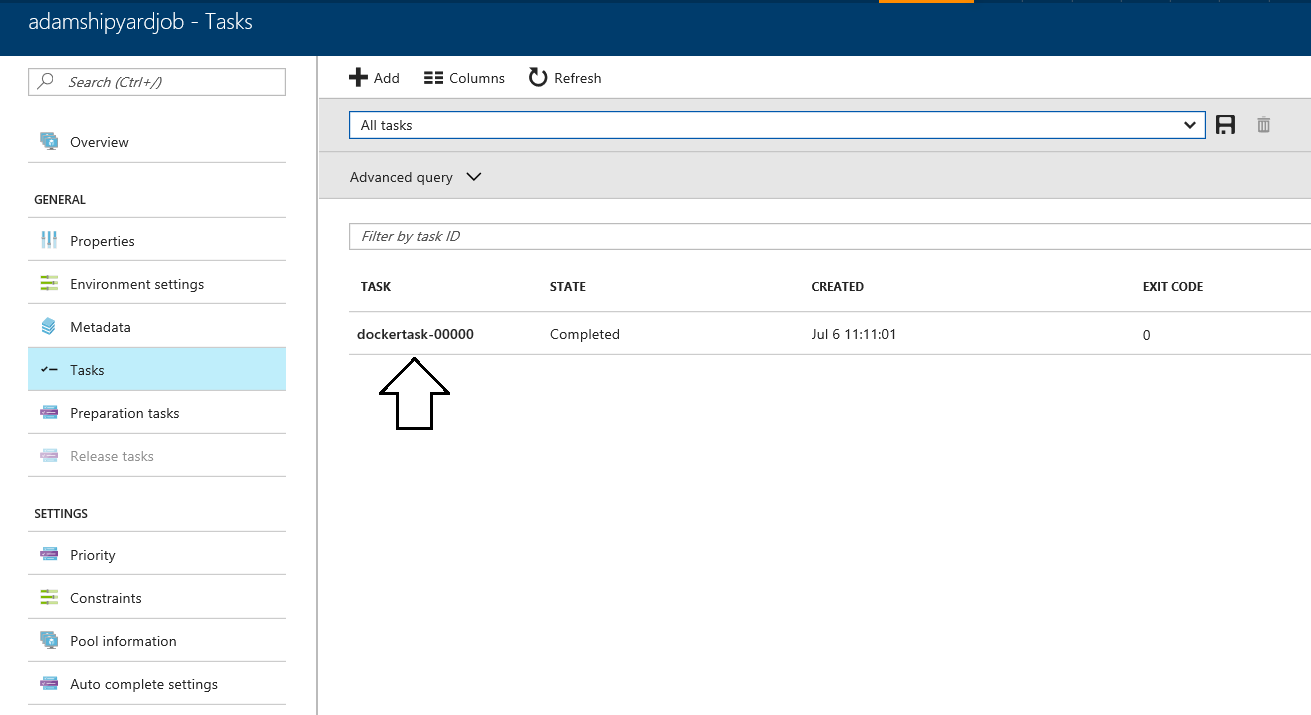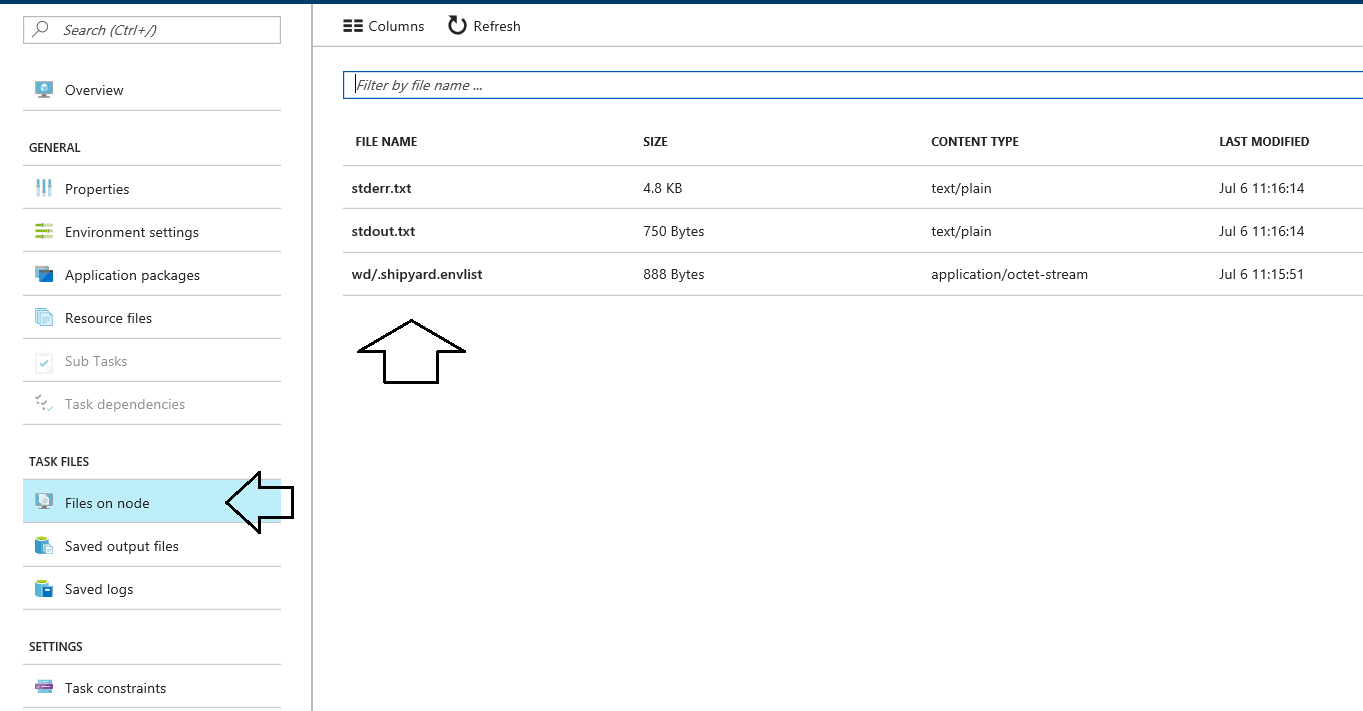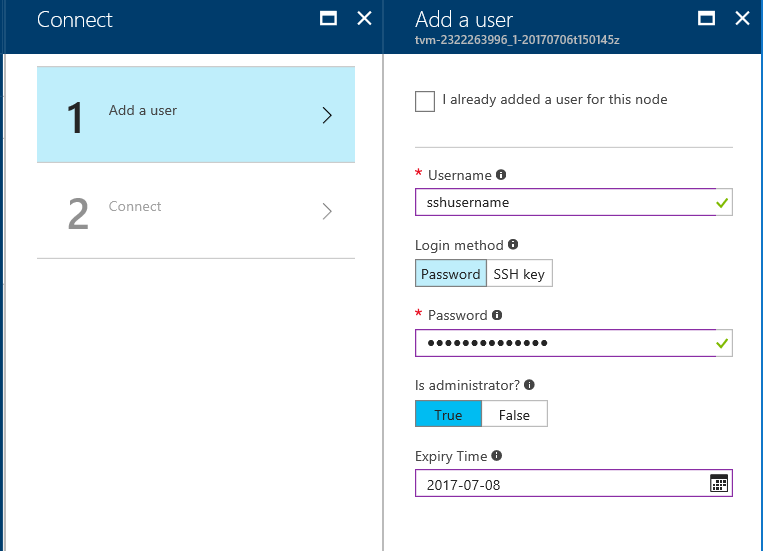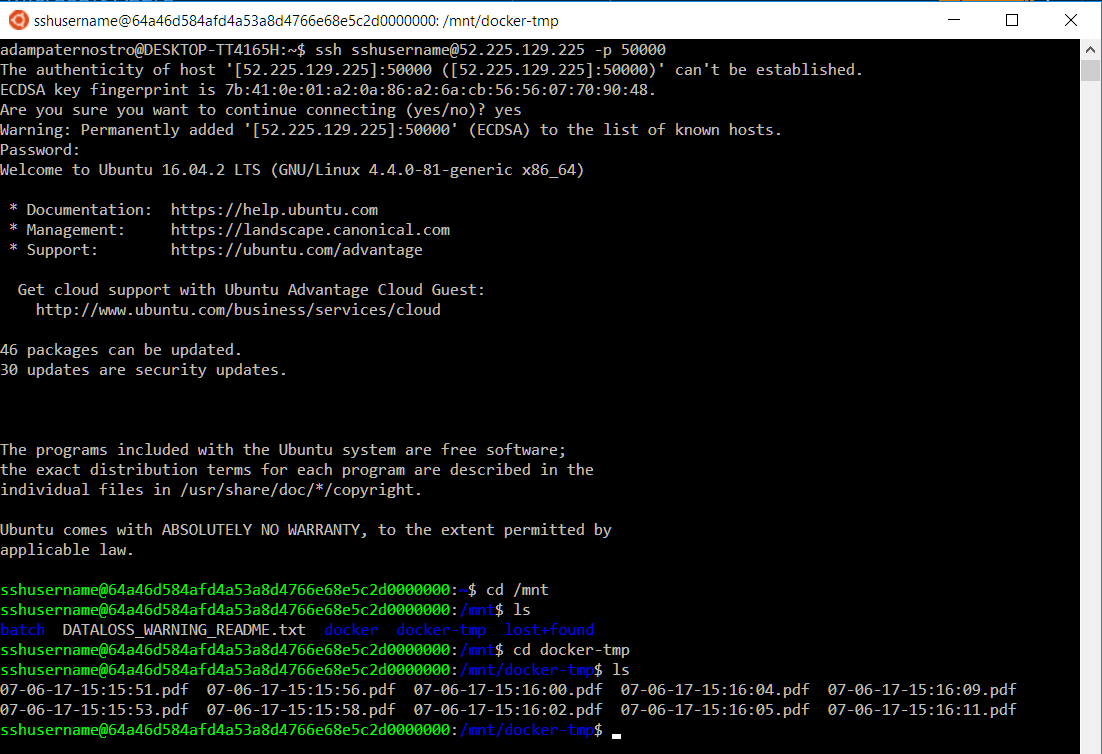Demo of using Docker contatiners in Azure Batch (using Shipyard). This also shows how to mount a Docker Volume using Shipyard.
- Create a Resource Group (e.g. AdamShipyardDemo)
- Create a "Batch Service" account (e.g. adamshipyardbatchservice)
- When creating the "Batch Service" create a storage account (e.g. adamshipyardstorage)
- Create Ubuntu Server 16.04 LTS (e.g. adamshipyardvm)
Username: shipyarduser Password: <<REMOVED>>
Hard disk: HDD
Size: D1_V2 (does not need to be powerful)
Use Managed Disk: Yes
Monitoring: Disabled
Use the defualts for Networking
sudo apt-get -y install apt-transport-https ca-certificates curl
curl -fsSL https://download.docker.com/linux/ubuntu/gpg | sudo apt-key add -
sudo add-apt-repository "deb [arch=amd64] https://download.docker.com/linux/ubuntu $(lsb_release -cs) stable"
sudo apt-get update
sudo apt-get -y install docker-ce
sudo docker run hello-world
sudo docker pull alfpark/batch-shipyard:cli-latest
- Create a directory mkdir docker
- Create a file named Dockerfile and place this in the file
FROM alpine
WORKDIR /app
RUN apk add --update bash
RUN apk add --update curl && rm -rf /var/cache/apk/*
ADD download.sh /app
CMD ["bash","./download.sh"]
- Create a file named download.sh and place this in the file
#!/bin/bash
for i in {1..10}
do
filename=$(date +"%m-%d-%y-%T").pdf
echo "Starting Download: $filename"
curl -o /share/$filename http://ipv4.download.thinkbroadband.com/20MB.zip
echo "Downloaded: $filename"
done
- Build the Docker image
sudo docker build -t adamshipyarddockerimage .
- List the images
sudo docker images
- Run the image locally
sudo docker run -v ~/mnt/share:/share adamshipyarddockerimage
sudo docker login
sudo docker tag adamshipyarddockerimage adampaternostro/adamshipyarddockerimage:latest
sudo docker push adampaternostro/adamshipyarddockerimage:latest
-
Go back to your home directory (cd ..)
-
Make a directory (e.g. config)
-
cd config
-
Create a file named "config.yaml"
- Description: This contains a reference to a storage account used by Shipyard for its own internal purposes. It also has a reference to our Docker image as well a Data Volume so we know where to download our files.
- For full schema: https://github.com/Azure/batch-shipyard/blob/master/docs/12-batch-shipyard-configuration-global.md
batch_shipyard:
storage_account_settings: mystorageaccount
global_resources:
docker_images:
- adampaternostro/adamshipyarddockerimage:latest
docker_volumes:
data_volumes:
ephemeraldisk:
host_path: "/mnt/docker-tmp"
container_path: "/share"
- Create a file named "credentials.yaml"
- For full schema: https://github.com/Azure/batch-shipyard/blob/master/docs/11-batch-shipyard-configuration-credentials.md
- Change the Batch: account_key and account_service_url
- Change the mystorageaccount: account and account key (NOTE: keep the name mystorageaccount since it is referenced in the "config.json")
credentials:
batch:
account_key: "<<REMOVED>>"
account_service_url: https://adamshipyardbatchservice.eastus2.batch.azure.com
storage:
mystorageaccount:
account: adamshipyardstorage
account_key: "<<REMOVED>>"
endpoint: core.windows.net
- Create a file named "jobs.ymal"
job_specifications:
- id: adamshipyardjob
data_volumes:
- ephemeraldisk
tasks:
- docker_image: adampaternostro/adamshipyarddockerimage:latest
remove_container_after_exit: true
command: bash /app/download.sh
- Create a file named "pool.yaml"
pool_specification:
id: adampool
vm_size: STANDARD_D1_V2
vm_count:
dedicated: 2
low_priority: 0
vm_configuration:
platform_image:
publisher: Canonical
offer: UbuntuServer
sku: 16.04-LTS
reboot_on_start_task_failed: false
block_until_all_global_resources_loaded: true
sudo docker run --rm -it -v /home/shipyarduser/config:/configs -e SHIPYARD_CONFIGDIR=/configs alfpark/batch-shipyard:latest-cli pool add
sudo docker run --rm -it -v /home/shipyarduser/config:/configs -e SHIPYARD_CONFIGDIR=/configs alfpark/batch-shipyard:latest-cli jobs add --tail stdout.txt
(DO NOT DO THIS UNTIL YOU ARE DONE EXPLORING THE AZURE PORTAL) (you do not have to do this, you can set the auto scaling down to zero when the pool is not in use)
sudo docker run --rm -it -v /home/shipyarduser/config:/configs -e SHIPYARD_CONFIGDIR=/configs alfpark/batch-shipyard:latest-cli pool del
- You can see the pools, jobs, output files (stdout, stderr) and ssh into each node:
-
Change the Docker image to do some processing
-
In the jobs.json you can pass parameters to your container. Typically you would stage your data to be processed in Blob or Azure Data Lake Storage (ADLS) and then download to the batch worker node, process and then upload the results. The parameter is typically the name of the blob data or ADLS data to process.
-
To use this for a real workload you would need a small program to generate a jobs.json and then submit the job to Azure Batch
-
You can also use Azure Functions and go serverless to submit jobs through Azure Batch: https://github.com/Azure/batch-shipyard/blob/master/docs/60-batch-shipyard-site-extension.md
